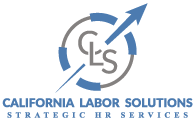State laws and regulations, technology and other emerging trends, have changed the way HR Management is done. In California, employers have a complicated set of state laws to navigate, with strict limits on work hours, hiring practices, discrimination, harassment and other provisions. However, California is one of the most employee-friendly states in the U.S.
Here are some of the top HR challenges that California employers are facing in 2020:
Sexual-Harassment Prevention Training
California law requires all employers with 5 or more employees to provide at least 1-hour of sexual harassment and abusive conduct prevention training to nonsupervisory employees and at least 2-hours of sexual harassment and abusive conduct prevention training to supervisors and managers once every two years. There are no signs that the deadline for the mandatory training requirements issued by the California Department of Fair Employment and Housing will be extended from the December 31, 2020 compliance deadline.
The training must cover abusive conduct, prevention, discrimination and retaliation, and it must include instruction on harassment tied to gender identity, gender expression and sexual orientation. Even temporary, seasonal and migrant agricultural workers must participate.
Independent Contractors
The court spelled out three conditions—an “ABC test”—that workers must meet to be classified as independent contractors and therefore be exempt from minimum-wage laws, overtime-pay requirements and other benefits.
Only seven categories of occupations or businesses are excluded from having to adhere to the test, leaving many workers and industry groups fighting for better clarification. In the meantime, employers have had to drastically change their approach.
I-9 Compliance
California employers have a large pool of foreign-born workers to recruit from, which leaves them at risk of making errors in the Form I-9 filing process. Because of this, they are more likely to be targeted for I-9 audits, and any mistakes in the filing or record keeping of these forms can bring about costly penalties. A new form I-9 was released for 2020, and beginning on May 1st of this year, employers will only be given the option to use the electronic version for new hires.
Fair Pay and Salary History
Businesses based in California or with offices in the state are voluntarily undergoing pay audits to determine if they are unwittingly responsible for pay disparities tied to race, gender or ethnicity. Differences in pay are still permissible based on factors such as education, experience and seniority.
California’s Department of Industrial Relations, or DIR, states that under the Equal Pay Act, as amended effective January 1, 2019, an employer may not justify any pay difference between employees of the opposite sex, or employees of different race or ethnicity based on an employee’s prior salary.
This means that establishing salaries, giving bonuses and offering raises are hold potential liability for employers. In California today, hiring managers are not allowed to ask a job candidate for their salary history and must provide a pay scale to any applicant who requests it.
Minimum Wage
The statewide minimum wage was raised to $11 an hour for businesses with 25 or fewer workers and to $12 an hour for employers with more workers. HR professionals should note that many localities in the state have higher minimum-wage rates.
Additionally, the state’s salary threshold for the executive, administrative and professional exemptions from overtime pay is directly tied to the statewide minimum wage. Employers should ensure that workers who meet the respective exemption’s duties test are also earning a fixed monthly salary of at least double the minimum wage for full-time employment.
The Fair Labor Standards Act (FLSA) is a complex set of labor laws that sets the policies for minimum wage, overtime pay, record keeping and other employment standards that affect employees in the private sector as well as in Federal, State, and local governments. Non-compliance can result in costly penalties, back wages, back taxes and legal fees for the employer, which seem to get more expensive each year.
Generational differences
For the first time in modern history, most companies have four to five different generations working together at once, including the silent generation, baby boomers, Gen X, millennials, and now Gen Z.
All have their own generational personalities and expectations that must be acknowledged, appreciated and managed so that companies are able to continuously improve performance and leverage the creativity and experiences of their entire workforce.
As a result, companies are changing the basics of people management, from the way performance reviews are handled to incorporating flexible work arrangements.
High Turnover
Retaining talented, quality employees can be extremely difficult in a time when unemployment rates are low. California is currently holding a record low 3.9% unemployment rate. Also, a rapidly expanding economy often means new career opportunities.
Companies often can’t find enough qualified workers; this leads to businesses increasing pay and offering a wide variety of benefits to attract and retain staff.
Highly skilled employees know they are at an advantage and may be looking for career opportunities that include better benefits, flexible hours, better work/life balance and a more diverse workplace culture. In order to improve employee retention in 2020, employers need to innovate their recruiting and employee engagement strategies.
Health and Safety Policies
The global Coronavirus outbreak has dominated public conversation over the 2020. Employers are now facing the challenge of expanding their health, safety and leave policies to better protect employees from being exposed to and transmitting communicable diseases and lessen the impact on their business when large-scale quarantines are imposed.
Also, HR Managers and Employers have to manage high levels of absence and paid leaves that could affect the business.
More employers are encouraging remote working to allow workers to avoid unnecessary travel and adhere to health agency recommendations while remaining productive.

